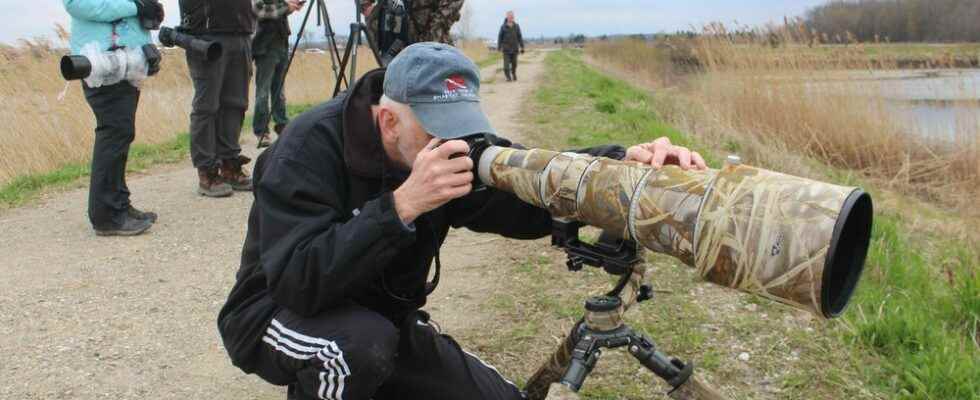
A shorebird never seen in Canada until Saturday evening has made the Thedford sewage lagoons a destination for birders from near and far.
James Holdsworth, a birder from the Port Franks area, saw and photographed the marsh sandpiper and then texted Jeff Skevington, president of the Ontario Field Ornithologists, a club dedicated to the study of birds in the province.
“His phone was at three per cent (battery) when he texted me. He had blown through the battery on his camera. . . . His hands were still shaking,” Skevington said.
“Kudos to James for recognizing it.”
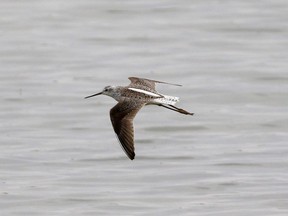
Since then, hundreds of birders have made the trip to just outside the Lambton Shores community of Thedford to watch and photograph the bird after the group arranged site access with municipal officials.
Birders have come from across Ontario and Michigan for the chance to add to their lists a bird never before seen in Canada.
“It has ruffled some feathers, that’s for sure,” Skevington said.
“That never happens,” Skevington, who is from Ottawa, said about such a rare sighting.
“If it does happen. New birds for Canada are usually in coastal British Columbia or Newfoundland, not the middle of the continent, so it’s pretty cool,” he said.
It is also the first time a sighting of the bird has been reported in all of eastern North America, Skevington said.
The marsh sandpiper breeds in Eastern Europe and Russia, and usually travels to places like China, India, South Africa and Australia. “There are almost no records in North America,” other than a few sightings in Alaska and California, Skevington said.
“So this bird’s lost,” Skevington said. “We don’t know how to came to get this lost.”
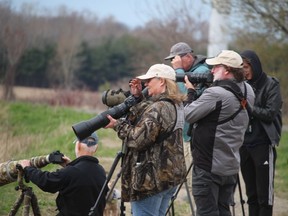
The sighting at the lagoon was extremely exciting for birders, but the municipal property isn’t normally open to the public. Skevington quickly searched online and found a phone number of Lambton Warden Kevin Marriott, who passed along a number for Bill Weber, mayor of Lambton Shores.
After the club agreed to assume liability for birders visiting the lagoons and have a member on site, the municipality agreed.
Word spread quickly online among birders.
“They opened the gate for us at 8 am on Sunday and there were 40-plus cars parked on the roadside at that point,” Skevington said.
He was there with about 120 birders who went in initially.
“They kept coming all day,” Skevington said.
He estimated more than 400 birders from all over southern Ontario and a few from nearby Michigan visited that first day.
The club and the municipality are going day to day with the access arrangement, Skevington said.
More than 200 had visited by Monday afternoon, he said.
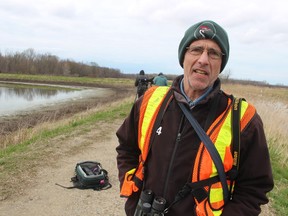
“I just heard someone is flying up from Houston because this is considered a mega-rarity,” said Jack Alvo, a Toronto birder representing the club at the lagoons Monday afternoon.
Jennifer Martin had traveled from outside of Hamilton.
“People will come from far and wide to see this bird because the likelihood of them every seeing it again is very low, unless they travel to where this bird actually lives,” she said. “It’s what us birders call a ‘lifer.’”
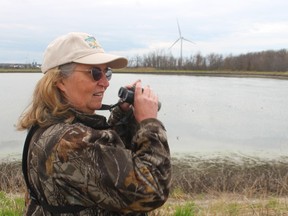
Birders typically keep a life list of the species they’ve seen.
Brandon Aho drove more than an hour from Macomb County, Mich., and set up a scope at the lagoons.
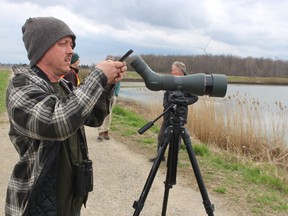
“It’s a good bird,” he said, adding the first sighting in eastern North America “is pretty major.”
Skevington said birders have been “super enthusiastic – loving the experience.”
He added, “I’m getting lots of texts and emails from people quite far afield who want to come.”
Visitors at the lagoons Monday said they had heard birders from as far away as Texas and Washington State were expected.
Skevington said it has been a chance to test a new Ambassador program the club created to arrange for birders to visit sites on properties not open to the public when there are sightings, such as the one near Thedford.
“I think it has been a screaming success,” he said.
The popularity of birding has been growing, which can create challenges “when a rare bird shows up” and large numbers of people want the opportunity to visit the site, Skevington said.
“It has been great and really positive working with the local municipality,” he said.
Weber said he was impressed by the birding group’s “amazing” organization, as well as the birders “coming from all around.”
“It was really good to have a positive story that we could have people come together and have something to do that’s out in nature,” the local mayor said.
Weber said he welcomes the fact the club is “environmentally cautious” and didn’t want to disturb the site.
A plus for the community is that birders coming from outside the area are visiting local restaurants for lunch and dinner, he said.
If the municipality remains on board, the club would like to continue the arrangement to allow birders into the site as long as the bird remains there, Skevington said.
“These things don’t always stay for long,” he noted.
While other birds at the lagoons have appeared comfortable remaining close to the shore where birders are allowed to set up scopes and camera tripods, the marsh sandpiper has stayed in a far corner of one of the lagoons, he said.
The marsh sandpiper is brown and white, “not particularly showy,” Skevington said. “It’s kind of pale for a shorebird,” with a bit of black on its shoulder which is unlike any other shorebirds seen in the area, he said.
“The bill is really unique. It’s long and needle-thin. . . most shorebirds have a thicker bill,” he said. “It has really long-spindly legs and is quite funny looking when it’s out on the shore, compared to the others.”
He added, “All the other birds are picking on it. They all know it doesn’t belong.”
